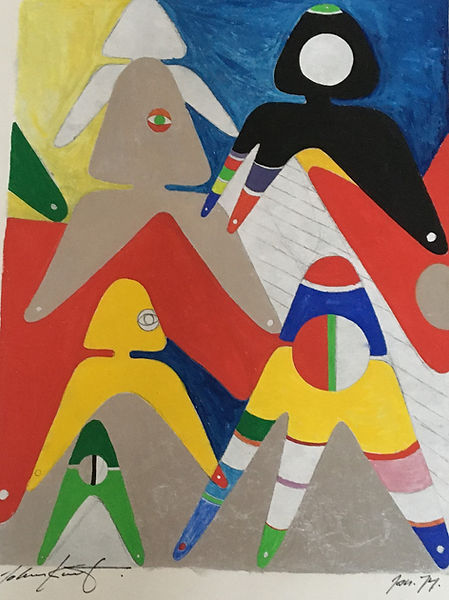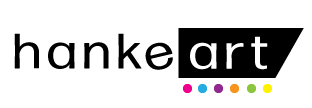The Attic Series
The Attic Series is Johannes Kunst’s use of simplified, biomorphic figures to represent both the oppressive confinement of hiding and the vivid, imaginative world he retreated into. Instead of realistic scenes, the paintings depict these "expressively recaptured memories" through a unique visual language.
Key symbols and their meaning:
-
Entangled biomorphic forms: Many of Kunst's attic paintings feature a dense web of abstract, intertwined organic shapes. These fluid, living forms symbolize the family, including his brother, huddled together in the constricted attic space. The entanglement of the forms represents their shared experience, their forced closeness, and the complex psychological ties of their trauma.
-
Juxtaposition of claustrophobia and fantasy: The paintings employ a striking contrast between the physical confinement of the attic and the limitless world of a child's imagination. Kunst uses the graphic linework that defines his figures to create a sense of being hemmed in, a reflection of the intense anxiety and terror that defined this time. However, he balances this with a playful, vibrant palette that suggests a fantastical, internal escape. The bold colors represent a child's resilience and capacity for finding hope and joy even in dire circumstances.
-
Narrative through abstraction: Rather than a single narrative, the attic series tells a broader story through its symbolic language. The simplified figures are used to re-create emotional rather than physical reality. In this way, his art acts as a parallel to accounts like The Diary of Anne Frank, showing how a creative and sensitive mind processes wartime trauma. The paintings are "alternately sad, hopeful, and terrifying," capturing the complex emotions of the experience.
-
The attic as both prison and refuge: The attic itself becomes a potent symbol. While it was a "hiding" place, it was also a refuge where the children were protected from the outside world. This duality is likely explored through Kunst's interplay of dark, anxious details and bright, whimsical colors. The attic was a place of psychological complexity—a safe haven that was also a prison of forced isolation.
.







































































